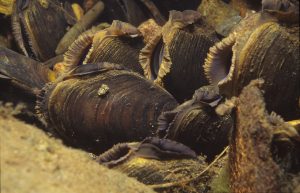Saving the small things that run the planet
Important Invertebrate Areas About IIAs Selecting and Mapping IIAs Supporting Invertebrate Conservation IIAs in Planning IIA Landscapes Single Species IIAs Using IIA Maps and Profiles FAQ IIA Data Providers IIA Document Library IIA Shapefiles
Important Invertebrate Areas (IIAs) are the best places in Great Britain for our invertebrates, which have been identified using the most up-to-date data available from over 80 national expert recording schemes. They support some of our rarest and most threatened species, vulnerable habitats and unique assemblages of invertebrates.
Single Species IIAs
Some IIAs have been identified for just a single species – one of greatest conservation concern, either nationally or internationally. They are our rarest and most threatened species, meaning there is a special responsibility to act and conserve them.
Click on the case studies below to explore some our single species IIAs.
Bredon Hill & Dixton Wood
This West Midlands IIA qualifies for its population of the Globally Endangered Violet Click Beetle.
From Bredon Hill © Mike Finn (Flickr, CC)
More information

This threatened beetle is known in the UK from only three sites, including the Bredon Hill Special Area of Conservation (SAC)/Site of Special Scientific Interest (SSSI), and Dixton Wood SAC/SSSI.
The Violet Click Beetle (Limoniscus violaceus) is declining across its European range and is already regionally extinct in some countries. It is associated with the wood mould in decaying wood cavities at the base of veteran Ash and Beech trees but has been lost from many sites due to lack of continuity of this rare habitat feature. The adults also require flowering shrubs such as Hawthorn, which are often lacking in sites with suitable veteran trees. Management within and around this IIA should look to future-proof landscapes to ensure a long-term pipeline of future veteran trees, to extend the life of maturing and veteran trees with dead wood habitats and to ensure that they are managed with flowering shrubs in mind.

Ehen Valley
The Ehen Valley IIA in Cumbria is home to England’s largest population of Freshwater Pearl Mussel.
River Ehen emerging over weir at end of Ennerdale Water © alh1 (Flickr, CC)
More information

The Freshwater Pearl Mussel (Margaritifera margaritifera) occurs at exceptionally high densities, with a population of over 100,000 individuals. It is also one of the few English populations showing signs of recruitment, with juvenile mussels recorded, making it a national conservation priority.
The Ehen Valley IIA includes the River Ehen Special Area of Conservation (SAC)/Site of Special Scientific Interest (SSSI), and river downstream of the SAC/SSSI to its mouth, and its source at Ennerdale Water. These features are buffered to include the immediate wider landscape, including part of the Lake District High Fells SAC/SSSI on the slopes around Ennerdale Water. This is because the species I highly vulnerable to pollution and changes in water quality that can often result from poor land management practices. Combined with its vulnerability to river engineering works, a wider catchment approach that looks beyond the river channel is necessary for the conservation of this species. It is illegal to disturb, injure, take or kill Freshwater Pearl Mussels, however, illegal collection continues.

Llŷn Peninsula
Jutting into the Irish Sea from North West Wales, the Llŷn Peninsula is home to one of Britain’s rarest bees - the Cliff Mason Bee.
Porth Neigwl © Liam Olds
More information

The endangered Cliff Mason Bee (Osmia xanthomelana) is a specialist of coastal soft rock cliffs, where it uses the wet mud from seepages to construct its nest in the soft ground. It forages on the flowers of the cliff slopes and cliff top grasslands. Formerly found around the English and Welsh coast, with hotspots in North West Wales and the Isle of Wight, it now hangs on in just two sites, both on the Llŷn Peninsula IIA.
The Llŷn Peninsula IIA includes Porth Ceiriad and Porth Neigwl, both of which are part of the Porth Ceiriad, Porth Neigwl ac Ynysoedd Sant Tudwal Site of Special Scientific Interest (SSSI).
Cliff and coastal protections and drainage schemes have interrupted the dynamic natural processes of the cliff landscape. Coupled with the loss of flowers from the intensive management of cliff top grasslands and coastal erosion, the habitat for the Cliff Mason Bee is very restricted. Climate change poses a further risk, with the potential for increased water abstraction affecting the essential freshwater seepages, while the potential for extreme events such as winter storms and increased coastal erosion and landslips could lead to the sudden loss of this very localised bee.
